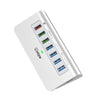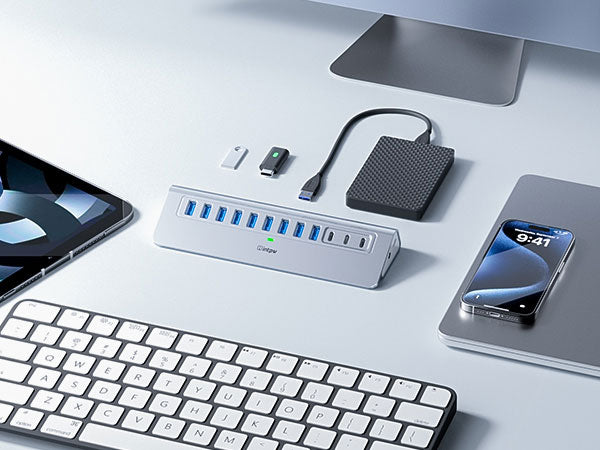
Conquer Connectivity Chaos: Your Expert Guide to Choosing a Quality Active USB Hub
, by USintpw, 5 min reading time

, by USintpw, 5 min reading time
In today's hyper-connected world, our devices are multiplying faster than rabbits, and their insatiable appetite for USB ports often leaves us feeling like we're playing a frustrating game of musical chairs with our peripherals. Fear not, fellow tech enthusiasts! A high-quality active USB hub can be your digital Swiss Army knife, transforming a single port into a plethora of possibilities. But with a dizzying array of options flooding the market, how do you choose the perfect hub to tame your connectivity chaos? This comprehensive guide will illuminate the key factors to consider, ensuring you select an active USB hub that's not just functional, but a true asset to your tech arsenal.

Before we dive into the specifics, let's clarify what exactly constitutes an "active" USB hub. Unlike passive hubs that simply split the power and data signals from a single port, active hubs have their own power source. This is crucial for ensuring that all your connected devices receive adequate power, preventing frustrating situations like external hard drives randomly disconnecting or your phone refusing to charge. Think of it this way: a passive hub is like sharing a single water hose among multiple thirsty plants, while an active hub is like having a dedicated water line for each plant, ensuring they all thrive.

Now that we're on the same page about active hubs, let's explore the essential factors to consider when making your selection:
In the fast-paced world of data transfer, speed is paramount. Opt for a hub that supports USB 3.2 (or later) to ensure lightning-fast data transfer speeds between your devices and your computer. USB 3.2 offers a significant performance boost over its predecessors, allowing you to transfer large files, stream high-definition video, and back up your data in a fraction of the time.
Consider the number and types of ports you require. Do you need a mix of USB-A ports for traditional devices, a USB-C port for your latest gadgets, or perhaps even an HDMI or VGA port for connecting external displays? Think about your current and future needs to ensure your hub can accommodate your evolving tech landscape. Also, pay attention to the arrangement of the ports. Are they spaced adequately to accommodate larger USB connectors? Are they conveniently located for easy access?
As we discussed earlier, active hubs have their own power source, but the amount of power they can deliver can vary. If you plan to connect power-hungry devices like external hard drives or charge multiple devices simultaneously, make sure the hub you choose offers sufficient power delivery. Look for hubs that specify the power output per port or the total power output of the hub.
Your USB hub is likely to be a constant companion in your daily tech adventures, so it's essential to choose one that's built to last. Look for hubs made from durable materials like aluminum or high-quality plastic. Check reviews to see if users have reported any issues with the hub's durability or reliability.
If you're a frequent traveler or often work in different locations, consider the size and portability of the hub. Opt for a compact and lightweight hub that can easily slip into your laptop bag or backpack. Some hubs even come with detachable cables for added convenience.

Once you've covered the fundamental considerations, you might want to explore some advanced features that can further enhance your connectivity experience:
Some active USB hubs come equipped with HDMI or VGA ports, allowing you to connect external displays to your laptop or tablet. This can be incredibly useful for presentations, multitasking, or simply enjoying your favorite content on a larger screen.
If you frequently work in areas with unreliable Wi-Fi, consider a hub with an Ethernet port. Wired connections offer greater stability and speed, ensuring you stay connected when it matters most.
Photographers and videographers will appreciate hubs with built-in card readers. This allows you to quickly and easily transfer photos and videos from your memory cards to your computer.

Choosing the right active USB hub is a personal decision that depends on your specific needs and preferences. By carefully considering the factors outlined in this guide, you can confidently select a hub that will not only expand your connectivity options but also enhance your overall computing experience. Remember, a quality active USB hub is more than just a peripheral; it's an investment in your productivity and convenience.
So, go forth and conquer your connectivity chaos! With the right active USB hub by your side, you'll be ready to tackle any tech challenge that comes your way.

Subscribe to our emails